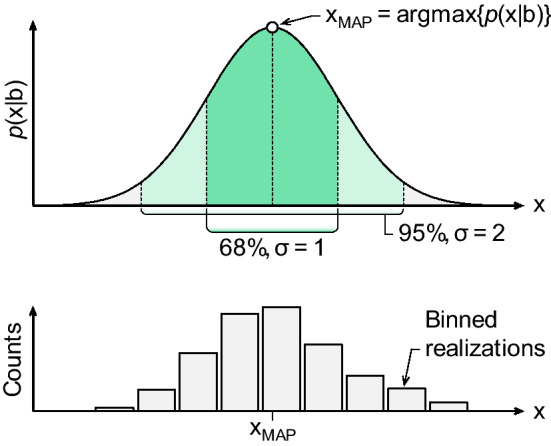Fig. 5.

Schematics demonstrating the principle of random variables underlying the Bayesian framework, specifically for the posterior distribution. Quantities-of-interest, x, such as the primary particle diameter, are interpreted as random variables that follow some distribution (top). Repeated observations/experiments will result in different realizations that, when binned (bottom), will resemble these distributions. The distributions then contain information about estimates of the quantities, such as the maximum a posteriori (MAP) estimate, and corresponding uncertainties, shown here for a normal distribution
